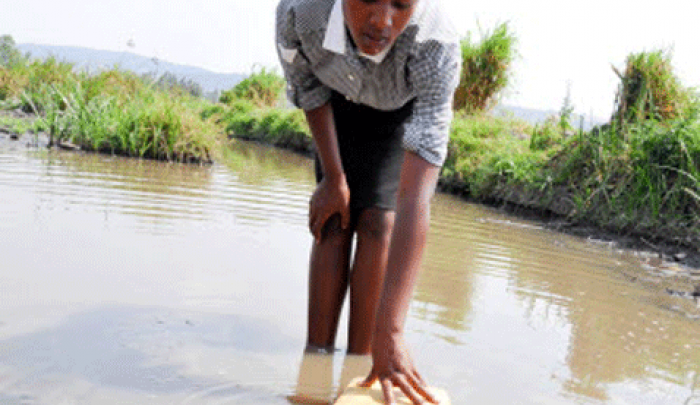Highlights
- Part of the $500 million ‘For Every Child’ campaign to help 10 million children worldwide with water, health services, child protection
- Organization hopes to give 6 million people access to clean water over next five years

Federal Way, WA (June 12, 2013) — At a time when foreign aid continues to be threatened by government cuts and sequestration, World Vision, a Christian humanitarian organization, is taking a bold step in the push to make life better for the world’s next generation. The organization hopes to raise $500 million by the end of 2015 to impact 10 million people in poverty around the world through its For Every Child fundraising campaign. The focus will be on key areas of development like clean water; fighting against diseases like malaria; providing loans so families can get a hand out of poverty; protecting children from trafficking; and support and partnering with local churches.
“This is the most far-reaching endeavor in World Vision’s history. Our goals are ambitious and the impact we hope to make would transform the lives of a generation of children,” said World Vision President Richard Stearns. “This is not a fundraising campaign but a rescue mission for the children we help and also for the donors who step up to say this is worth the fight.”
One of these key target areas is water, hygiene and sanitation (WASH). Studies have shown that clean water is an essential part of reducing the number of children worldwide who die before they reach their fifth birthday. For example, half of the chronic malnutrition in children around the world can be attributed to repeated diarrheal diseases and parasites, not just a lack of food.
“Having access to clean water makes a difference in nearly every area of life for families in poverty,” said Sean Kerrigan, World Vision’s senior director of Water, Sanitation and Hygiene. “It improves child health and nutrition by cutting the number of diarrhea and parasite cases, and even airborne diseases like pneumonia and meningitis that are spread by unwashed hands. It allows kids (especially girls) to go to school, rather than staying home to help with the chore of fetching water. It gives mothers the time to start or expand cottage businesses, and the means to grow gardens to feed their families year-round with more nutritious food.”
In the past 25 years, World Vision has brought clean water to 11 million people in Africa. The organization is hoping to expand that number by six million just in the next five years, which would quadruple the number of beneficiaries World Vision is able to reach per year. To do that, new solutions are needed. World Vision now has water Learning Centers in place in each region of Africa. At each center, a team of experts analyze what the organization is doing right and what has the most impact, then passes these practices along for wider use within World Vision field programs.
“This sort of constant reflection and improvement has resulted in ideas like combining high tech satellite imaging and mapping to determine the location and depth of water tables, with training for local entrepreneurs, allowing them to access the shallow water beds with low tech hand augers and simple, no-maintenance hand pumps,” said Randy Strash, World Vision’s senior manager of Water, Sanitation and Hygiene Programs. “The result is new local drilling businesses springing up, which in turn is dropping the cost to provide a well to communities. All this allows us to bring clean water to more people.”
While the world has met the MDG in safe drinking water (halving the number of people without access to clean water), World Vision is hoping to push beyond that goal and reduce the number by as much as 65 percent over the next five years in our targeted program areas.
“We’ve taken a hard look at the needs that exist today. They are great, but we refuse to believe that poverty is too big, too expensive, or too difficult to overcome — because for the millions of children living in poverty, the stakes couldn’t be higher,” Stearns said.
Interviews are available. For more information contact Lauren Fisher at +1.206.310.5476 or visit the For Every Child website.
– END –
About World Vision:
World Vision is a Christian humanitarian organization conducting relief, development, and advocacy activities in its work with children, families, and their communities in nearly 100 countries to help them reach their full potential by tackling the causes of poverty and injustice. World Vision serves all people regardless of religion, race, ethnicity, or gender. For more information, please visit www.WorldVision.org/media-center/ or on Twitter @WorldVisionUSA.